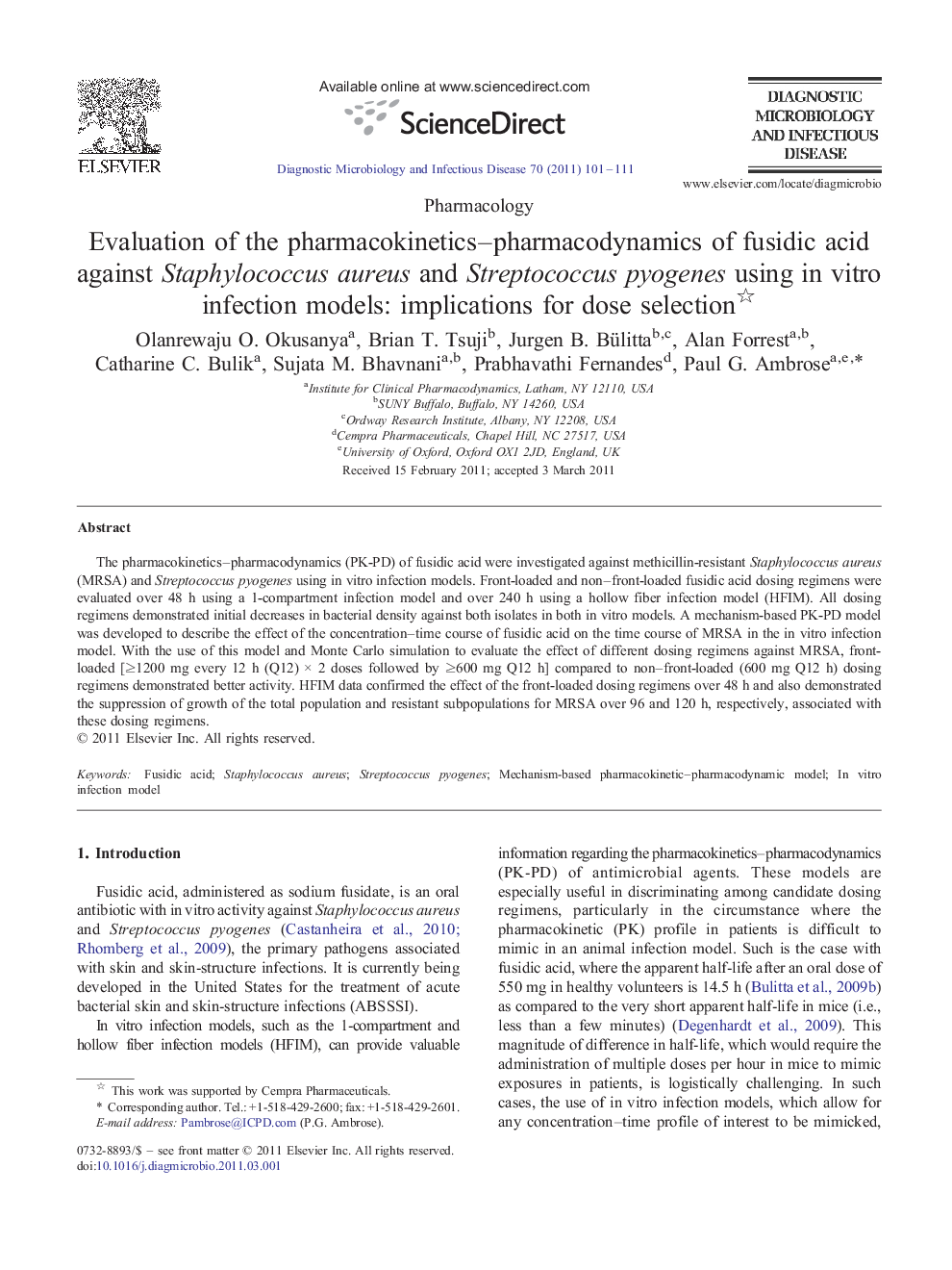| Article ID | Journal | Published Year | Pages | File Type |
|---|---|---|---|---|
| 6116577 | Diagnostic Microbiology and Infectious Disease | 2011 | 11 Pages |
Abstract
The pharmacokinetics-pharmacodynamics (PK-PD) of fusidic acid were investigated against methicillin-resistant Staphylococcus aureus (MRSA) and Streptococcus pyogenes using in vitro infection models. Front-loaded and non-front-loaded fusidic acid dosing regimens were evaluated over 48 h using a 1-compartment infection model and over 240 h using a hollow fiber infection model (HFIM). All dosing regimens demonstrated initial decreases in bacterial density against both isolates in both in vitro models. A mechanism-based PK-PD model was developed to describe the effect of the concentration-time course of fusidic acid on the time course of MRSA in the in vitro infection model. With the use of this model and Monte Carlo simulation to evaluate the effect of different dosing regimens against MRSA, front-loaded [â¥1200 mg every 12 h (Q12) à 2 doses followed by â¥600 mg Q12 h] compared to non-front-loaded (600 mg Q12 h) dosing regimens demonstrated better activity. HFIM data confirmed the effect of the front-loaded dosing regimens over 48 h and also demonstrated the suppression of growth of the total population and resistant subpopulations for MRSA over 96 and 120 h, respectively, associated with these dosing regimens.
Related Topics
Life Sciences
Immunology and Microbiology
Applied Microbiology and Biotechnology
Authors
Olanrewaju O. Okusanya, Brian T. Tsuji, Jurgen B. Bülitta, Alan Forrest, Catharine C. Bulik, Sujata M. Bhavnani, Prabhavathi Fernandes, Paul G. Ambrose,
